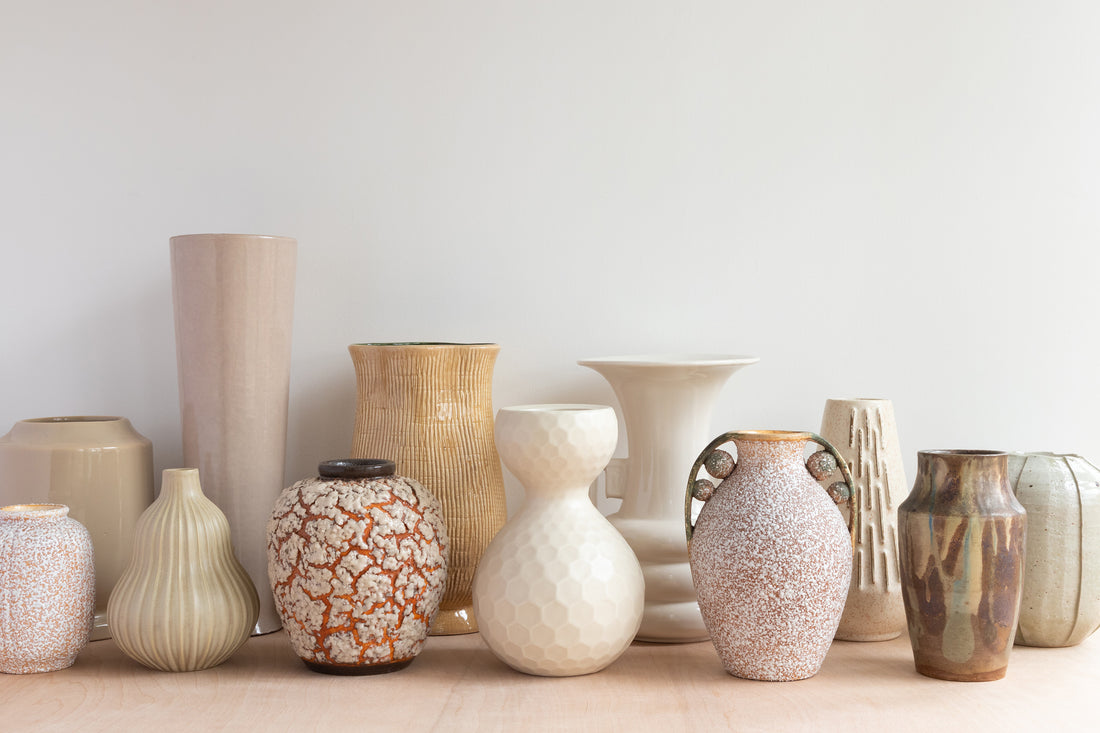
A Blossoming Legacy: Tracing the History of Flower Vases Through Time
Share
Flower vases have long been a symbol of beauty, elegance, and the natural world. These vessels, carefully crafted to hold and display the splendor of nature's creations, have a rich history that spans across cultures and centuries. From ancient civilizations to modern times, flower vases have evolved in design, materials, and symbolism, reflecting the changing aesthetics and values of societies. In this blog post, we'll take a journey through time to explore the captivating history of flower vases, uncovering their significance and transformation through the ages.
The story of flower vases begins in ancient civilizations such as Egypt, Greece, and China. In ancient Egypt, clay pots and vases were intricately designed with symbols and patterns, often used to hold offerings to gods or as burial items for the deceased. Greek pottery, on the other hand, showcased detailed illustrations of daily life, mythology, and flora. In China, porcelain vases emerged, bearing intricate patterns and scenes, signifying status and wealth. These early flower vases were not just vessels but also powerful symbols of cultural beliefs, religious practices, and social hierarchy.
The Renaissance era witnessed a resurgence of interest in classical art and culture. Flower vases took on new forms as they became part of still-life paintings, a popular genre during this time. Artists like Jan Brueghel the Elder and Ambrosius Bosschaert depicted elaborate arrangements of flowers in vases, often laden with symbolism. These paintings not only showcased the artists' skill but also celebrated the fleeting beauty of nature and the transience of life.
As trade routes expanded and global interactions increased, the demand for exquisite and rare materials grew. Porcelain vases, particularly those from China and later from Europe, gained immense popularity. The Ming and Qing dynasties produced delicate, hand-painted porcelain vases coveted by collectors worldwide. In Europe, the Royal Porcelain Factory in Meissen, Germany, began producing exquisite porcelain vases in the 18th century. Meanwhile, ceramic vases continued to evolve, with famous pottery centers like Delft in the Netherlands and Staffordshire in England contributing to the diverse range of vase designs.
The Victorian era introduced a new layer of symbolism to flower vases through the "language of flowers." Each flower held a specific meaning, and carefully arranged bouquets conveyed complex messages without the need for words. This sentimentality extended to the design of vases, with elaborate shapes and intricate patterns reflecting the emotions and social conventions of the time. Vases became a canvas for intricate engravings, delicate hand-painting, and even incorporating hair from loved ones as a personalized touch.
The 20th century marked a period of artistic experimentation and innovation in vase design. Art Nouveau introduced flowing lines and organic shapes, while Art Deco embraced geometric patterns and bold colors. In contemporary times, designers have pushed the boundaries of materials, incorporating glass, metal, and even unconventional objects to create unique vases that challenge traditional notions of form and function. Minimalist designs, eco-friendly materials, and the revival of handmade crafts have all contributed to the diverse landscape of modern flower vases.
The history of flower vases is a captivating journey that encompasses cultural heritage, artistic expression, and the evolving relationship between humans and nature. From ancient rituals to modern interior design, flower vases continue to evolve, reflecting the changing aesthetics, values, and innovations of each era. As we appreciate the intricate craftsmanship and symbolic significance of these vessels, we're reminded of the timeless beauty that flowers bring into our lives, encapsulated within the delicate embrace of a vase.
